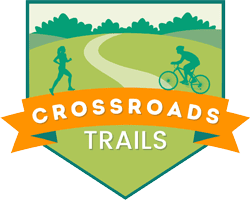Terre Haute filmmaker’s documentary tells story of paths through Hoosier scenery.
The length of a documentary about Indiana pedestrian trails in the early 1990s would’ve been about 60 seconds.
The one-running time of Terre Haute filmmaker Mark Gibson’s “The Hoosier Way: Trails of Indiana” epitomizes just how far the state has progressed in developing its hiking and biking paths.
“It’s still a work in progress,” Gibson said Tuesday. “There’s been a lot that’s been developed in the last 20 years.”
Terre Haute’s Heritage Trail is included in the documentary. The local trail got its start as the 21st century arrived as a paved path along a vacated railroad line. It now stretches nearly seven miles from the city’s east side to the Indiana State University campus. Vigo County has more than 30 total miles of trails, with the Heritage and others in the Wabashiki Fish and Wildlife Area, Hawthorn and Fowler and Prairie Creek county parks, Griffin Bike Park and the city parks. Additions to the Heritage Trail and others are planned, energized by last year’s completion of the pedestrian walkway over the Wabash River wetlands, connecting Terre Haute and West Terre Haute.
“Great things are happening in trail development,” said Michael Shaw, president of Wabash Valley Riverscape. “The city of Terre Haute is working on numerous projects including connecting the Heritage Trail to the river bridges. Vigo County Parks and [the] town of West Terre Haute are looking at extending the trail loop around West Terre Haute. The new pedestrian connector will link these projects.”
An eventual connection with the planned Parke Community Rail Trail at the Vigo County line could generate significant foot and bike traffic. The Parke trail is a $6.5-million project, using the state’s $5-million Next Level Trails grant and a matching 20% in local funds through fundraising, corporate grants and volunteer labor, materials and equipment, Mark Davis of the Parke Trails Alliance explained. It will expand Parke County’s tourism, the county’s second-largest industry behind farming, thanks to the Covered Bridge Festival and the historic covered bridges.
